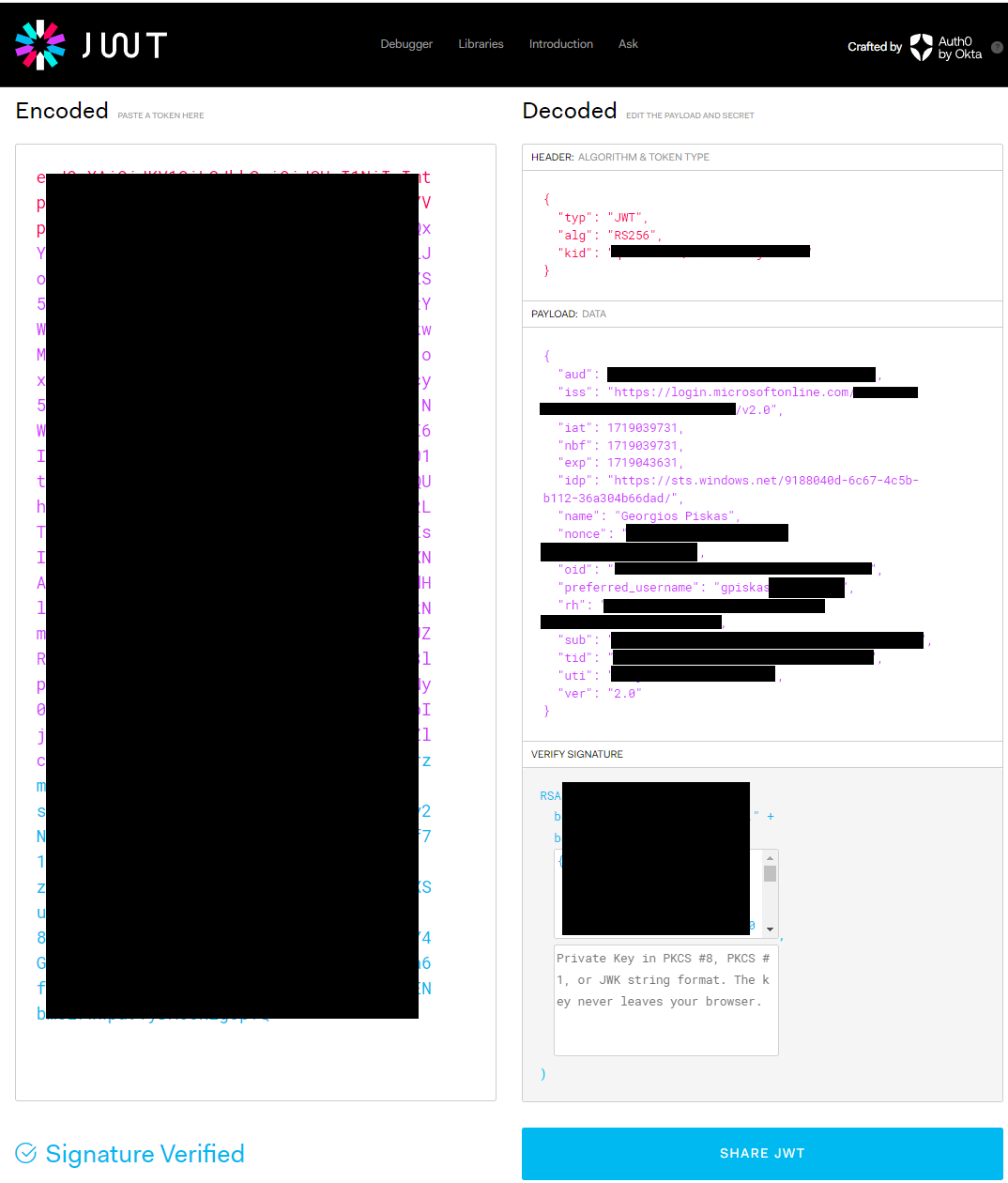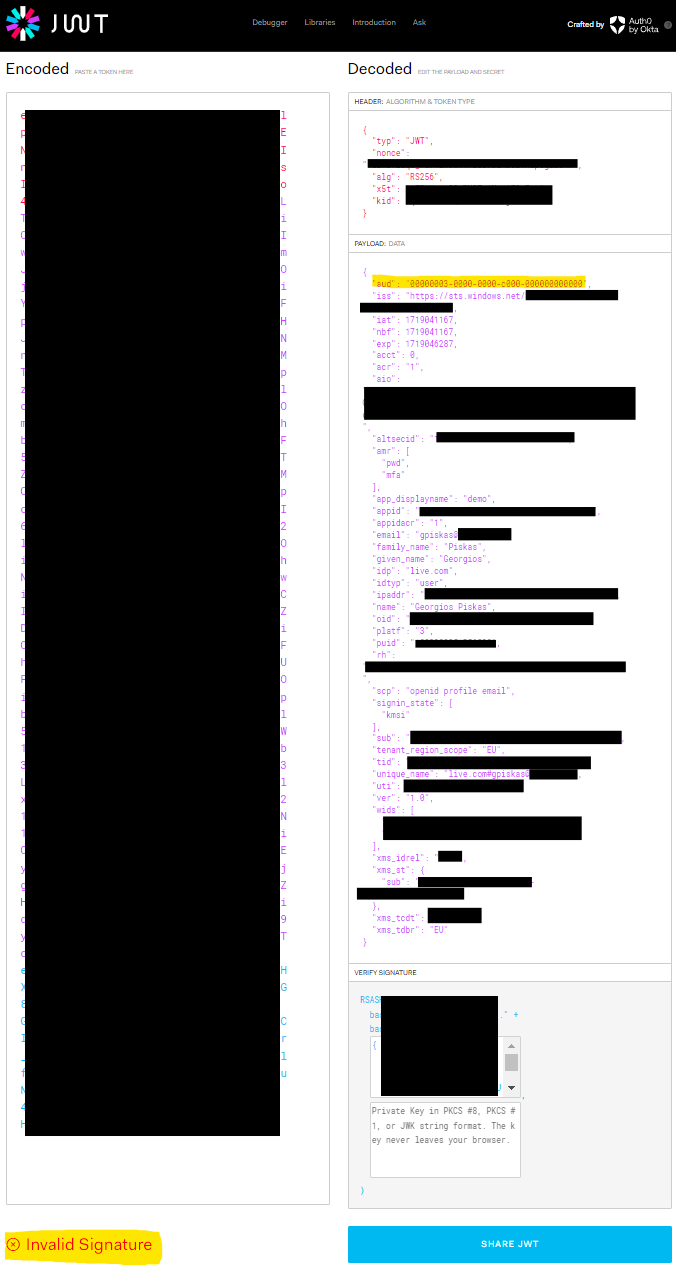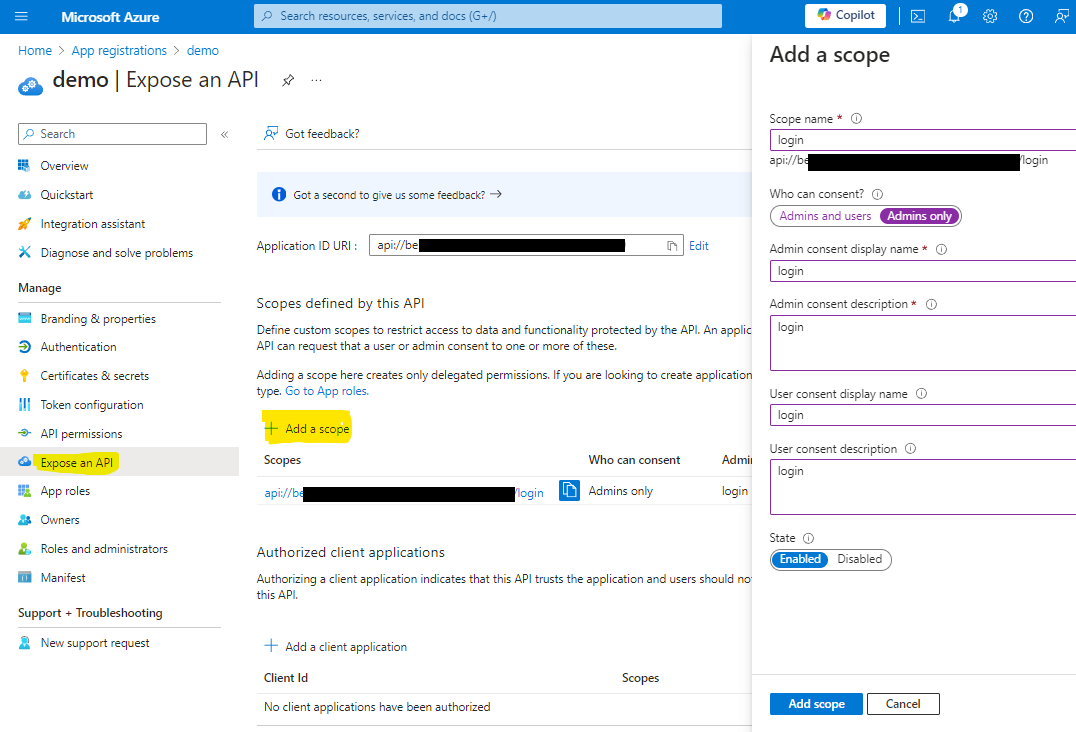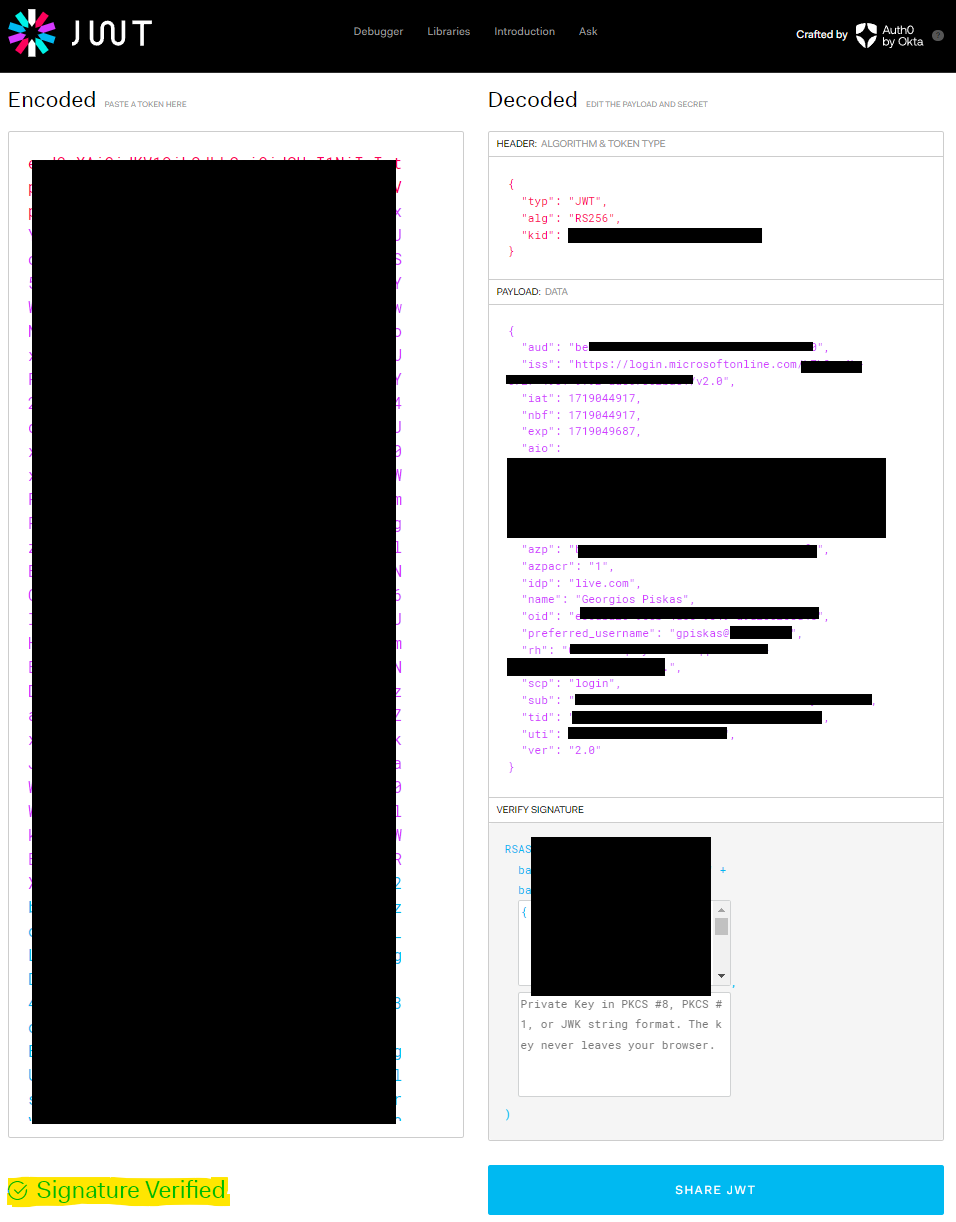When working with a Spring Boot application using OAuth 2.0 and OIDC (OpenID Connect protocol) you might need at some point to access the tokens of the logged in user. These are stored in the Security Context of Spring Security. In the following example I have set up a demo application using Spring Cloud Azure that simply authenticates a user, and then reads the ID token and Access token. If you want to learn more about refresh tokens check out this article.
Table of Contents
Setting Up the Application
For a detailed explanation on how to set up a Spring Boot OAuth 2.0 app refer to this article. I explain step by step how to achieve this, and this is a prerequisite for the rest.
Retrieving the ID Token
After authenticating, the ID Token is stored in the Principal object which is found within the Authentication object of the Security Context. After casting to the right types (DefaultOidcUser and OAuth2AuthenticationToken), you can finally fetch the OidcIdToken object that contains the raw token value as well as the claims parsed in a map. along with other information.
public OidcIdToken getIdToken() {
Authentication authentication = SecurityContextHolder.getContext().getAuthentication();
if (authentication instanceof OAuth2AuthenticationToken token && token.getPrincipal() instanceof DefaultOidcUser user) {
OidcIdToken idToken = user.getIdToken();
log.info("Token raw value: {}", idToken.getTokenValue());
log.info("Token claims map: {}", idToken.getClaims());
return idToken;
}
throw new IllegalStateException("Oauth2 Security Context not found!");
}
If you try to decode the token using jwt.io you will see something like the following. Tokens contain sensitive information so be careful when sharing them.

Retrieving the Access Token
In most scenarios you won’t need to access or use the ID Token yourself, Spring Security will handle it. However, Access Tokens are necessary to call third party APIs and you will need to manage them (unless a library is doing it for you behind the scenes). In the example below, we are fetching the access token acquired during login with scopes openid, profile, email. However, you can’t do much with that token as it’s considered as invalid, because the aud (audience) claim is set to 00000003-0000-0000-c000-000000000000, corresponding to the Microsoft Graph API. These kind of tokens are issued for MS Graph and are not supposed to be validated or used in any way. To access this token we are using the OAuth2AuthorizedClientManager.
@Autowired
private OAuth2AuthorizedClientManager oAuth2AuthorizedClientManager;
public OAuth2AccessToken getAccessToken() {
Authentication authentication = SecurityContextHolder.getContext().getAuthentication();
if (authentication instanceof OAuth2AuthenticationToken token) {
OAuth2AuthorizeRequest authRequest = OAuth2AuthorizeRequest
.withClientRegistrationId(token.getAuthorizedClientRegistrationId())
.principal(token)
.build();
OAuth2AuthorizedClient client = oAuth2AuthorizedClientManager.authorize(authRequest);
OAuth2AccessToken accessToken = client.getAccessToken();
log.info("Token raw value: {}", accessToken.getTokenValue());
log.info("Token scopes: {}", accessToken.getScopes());
return accessToken;
}
throw new IllegalStateException("Oauth2 Security Context not found!");
}
Decoding the token using jwt.io we get the following information. Interestingly we get an Invalid Signature warning in the bottom left, because the aud (audience) claim is set to 00000003-0000-0000-c000-000000000000 and does not match the client id of the application.

This is expected and we are not supposed to "fix" this. Instead, we need to request new access tokens on-demand, depending on what apps and scopes we need to access.
For the sake of demonstration, let’s try to get a valid access token during login. We need to create a scope for our own App Registration and then request this instead when logging in.
Step 1: Add a new scope called login.

Step 2: Set up the the new Scope in your application properties to be used during login. We are adding an item under authorization-clients called azure, and setting the authorization-grant-type to authorization_code in order to override the default login process and use our own login scope.
spring:
cloud:
azure:
profile:
tenant-id: your-tenant-id-goes-here
credential:
client-id: your-client-id-goes-here
client-secret: your-client-secret-goes-here
active-directory:
enabled: true
application-type: web-application-and-resource-server # or web-application
authorization-clients:
azure:
authorization-grant-type: authorization_code
scopes: api://your-client-id-goes-here/login
Step 3: Inspect the contents of the new Access Token. Now the aud claim corresponds to the client id of the App Registration and the signature is verified successfully.

Using Access Tokens
When you need to call a protected endpoint, you will need to request an access token with the respective scope that provides access to it and then add the token as a header to your API call as in the example below.
headers.set("Authorization", "Bearer " + accessToken.getTokenValue());
For an explanation on how to acquire access tokens, check out the following articles: